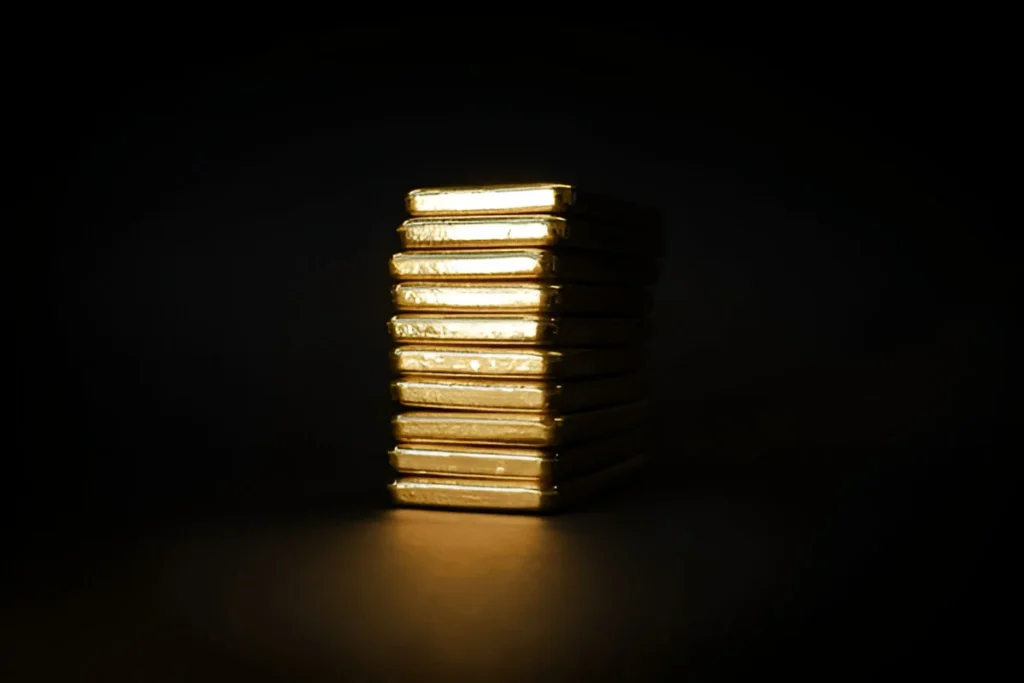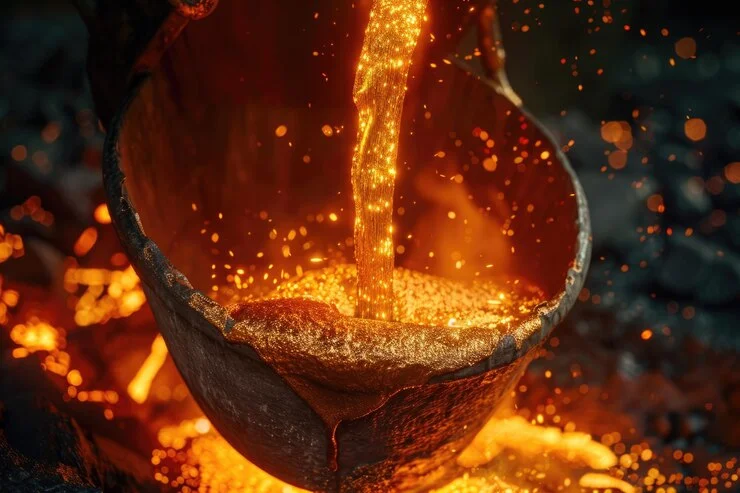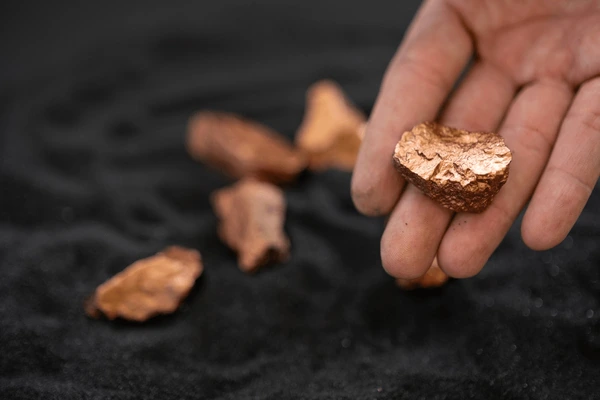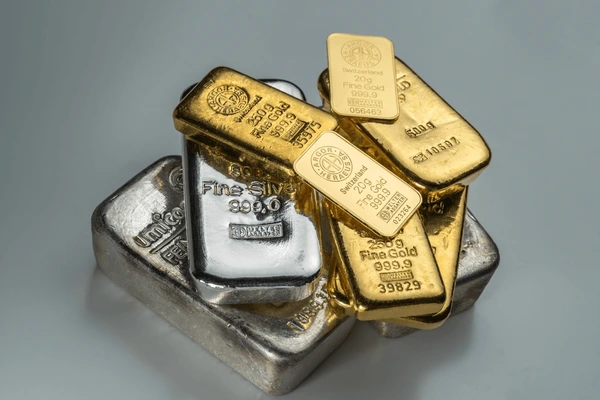Sayanava Sinha Roy
01.05.2025
What Happens to Old Gold During Refining?
Old gold can be recycled, purified, and transformed into valuable forms again. Learn the entire refining process and its benefits from a reputed gold buyer.
Why Understanding Gold Refining Matters?
Most people have gold jewelry stashed away—heirlooms, broken chains, single earrings, or outdated ornaments that no longer serve a purpose. But did you know that old gold can still hold significant value?
The process of refining transforms this unused, often neglected gold into something pure, reusable, and valuable. Whether you’re considering selling, melting, or simply understanding what happens to your precious metal, gaining insight into the refining process is both empowering and practical.
Table of Contents
Let’s walk you through what happens behind the scenes, and why it’s crucial to choose an ethical, transparent service provider if you’re ever dealing with old gold.

The Lifecycle of Old Gold – A Transformation Story
Refining gold isn’t just about melting it down. It’s a scientific, multi-step process that removes impurities, recovers pure metal, and prepares it for new use—without diminishing its inherent worth.
Step-by-Step: What Happens to Old Gold During Refining
- Assessment and Weighing
- The journey begins with a detailed inspection.
- Each item is weighed, documented, and evaluated for purity and composition.
- Items like jewelry, coins, or industrial scraps go through this initial check.
- Cleaning and Pre-Sorting
- Before refining, visible dirt, oils, and residues are removed.
- Materials are sorted based on karat value or alloy type—such as 22K jewelry or gold mixed with other metals.
- Melting the Metal
- Items are placed in a crucible and heated to temperatures over 1000°C.
- Once melted, a small sample is taken for a process called assaying, which determines exact purity.
- Flux Addition and Slag Removal
- Flux (a mixture of borax and other chemicals) is added to bind with impurities.
- These impurities rise to the top and form a layer called slag, which is skimmed off.
- Purification Process
- The molten gold is cooled into solid forms—often bars or beads.
- For higher purity (like 99.9% or 24K), methods such as electrolytic refining or the aqua regia process may be used.
- Re-assaying and Documentation
- Once refined, the gold is again tested and weighed.
- Certificates of purity are issued—especially if the metal is to be reused in jewelry or investment.
Why Refining Old Gold Is Beneficial
Refining offers more than just monetary returns. Here’s why people opt for it:
Key Advantages of Refining Old Gold
- High Return on Investment
Refined gold retains most of its value and can be sold, traded, or remade into modern jewelry. - Purity Guaranteed
The refining process ensures you receive pure gold, often up to 99.9% purity. - Environmentally Responsible
Recycling gold reduces the need for mining, conserving natural resources and reducing ecological impact. - Customized Reuse
Want to turn an old gold bangle into a modern pendant? Refining allows flexibility in creating new designs. - Transparent Valuation
Reputable refiners conduct accurate, assay-backed assessments—ensuring fairness.

How Refining Impacts Old Gold Value
What Makes Old Gold Valuable Even After Years?
You might wonder—does age or wear reduce gold’s value? The short answer: No. Gold is chemically stable. It doesn’t rust, degrade, or lose value over time. What does affect its resale value is:
1. Purity Level (Karat Value)
Older jewelry might be 22K, 18K, or even mixed with unknown alloys. Refining extracts the pure gold, ensuring better returns.
2. Net Gold Content
A heavy chain that’s only 40% gold may yield less than a lighter piece that’s 90% pure. Refining helps uncover actual value.
3. Non-Gold Components
Gemstones, solder, and other metals are removed during refining. These don’t count towards gold weight.
Did You Know? Even broken or mismatched gold items are equally valuable once refined—because it’s the gold content that counts, not the shape or design.
How to Choose a Reliable Refining Partner
While the process may sound scientific, trust is crucial. Choosing a certified, transparent, and experienced refiner ensures you’re not shortchanged.
What to Look For:
- Use of certified assay and testing labs
- Transparent weighing and melting process
- Detailed purity report post-refining
- Fair and instant valuation
- Eco-friendly refining methods
- Experience with diverse gold items (jewelry, coins, scrap)
Real-Life Example: A Ring with a New Purpose
A woman brought in her grandmother’s broken wedding ring—sentimental but unwearable. Through refining, the ring was purified and reshaped into a sleek gold bracelet she now wears daily. It retained its emotional value but got a second life, and even some extra purity was recovered.
This kind of transformation isn’t rare—it’s a blend of science and memory, crafted through refining.

Common FAQs About Gold Refining
Can I refine gold at home?
While small-scale testing is possible, professional refining ensures purity, safety, and precision. DIY melting may damage the gold or mix it with unwanted impurities.
How long does refining take?
Basic melting and testing may take 1–2 hours. Full-scale refining (to 99.9%) could take a day or more, depending on the method used.
Will I lose some gold in the process?
Not really. Impurities are removed, but the actual gold content is preserved. In fact, refining helps you realize the true, pure gold value.
Can I sell refined gold for more money?
Yes. Pure, certified gold commands a better price and is more trusted in resale markets.
Does refining affect gold’s resale market value?
Refined gold often sells at better margins due to verified purity, making it highly desirable for jewelers and investors alike.
Turning Old Gold into New Possibilities
Old gold is not waste—it’s potential.
Through refining, you’re not just unlocking financial value but also preserving heritage, reducing environmental impact, and creating room for modern expression. Whether you want to cash out, redesign an heirloom, or invest in pure metal, understanding the refining journey gives you the power to make informed, ethical choices.
And when handled with expertise and integrity, your old gold can become the foundation for something timeless, meaningful, and entirely new.
Why Expert Refining Makes a Difference
A company like Rahul Refiners and Analyzer brings not just machinery and processes to the table—but trust, certified purity, and decades of expertise in the field of precious metal recovery. They specialize in turning old gold into refined, market-ready metal with full transparency and scientific accuracy.
You deserve a process that’s as pure as the gold it produces.
Popular Post



